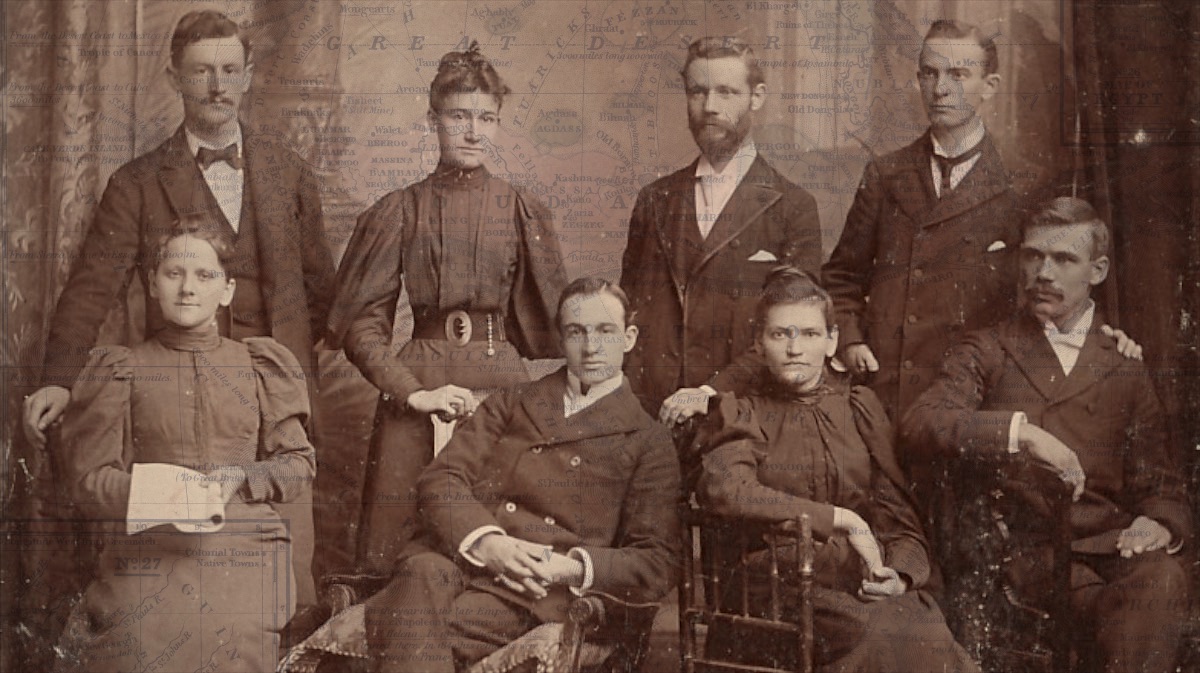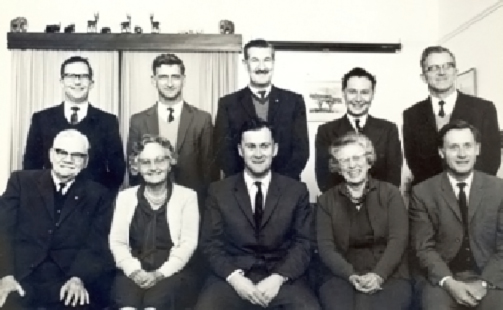Support AIM
Partner with us by subscribing to our newsletter.
Stay in touch with everything that happens at AIM.
Partner with us by subscribing to our newsletter. Stay in touch with everything that happens at AIM.
OUR HERITAGE
Africa Inland Mission (AIM) had its beginning in the work of Peter Cameron Scott (1867-1896), a Scottish-American missionary of the International Missionary Alliance who served two years in the Congo before he was sent to Scotland in 1892 because of a near-fatal illness. While recuperating, he developed his idea of establishing a network of mission stations which would stretch from the southeast coast of the continent to the interior’s Lake Chad. He was unable to interest any denomination in this idea (including his own Presbyterian Church), but he was able to interest several of his friends in Philadelphia in the work and in subscribing some funds. This group formed itself in 1895 into the Philadelphia Missionary Council.
BEGINNINGS
Scott quickly recruited several men and women who were willing to return with him to Africa to start work. The emphasis on accepting these and other early recruits was on their Christian commitment and personal uprightness rather than on any special training. The mission was to be composed of the workers in the field and would be entirely self-governing and independent of the Philadelphia Missionary Council. The Council, headed by Rev. Charles Hurlburt, agreed “. . . to spread the knowledge of the work and forward means and workers as God may supply them. They are under no pledge to the mission to supply these, but merely forward them as supplied.” Hurlburt was also president of the Pennsylvania Bible Institute, which provided most of the mission’s workers in its very early years
FIRST MISSIONARIES
On August 17, 1895, AIM’s first mission party set off. The group consisted of Scott, his sister Margaret, Frederick W. Krieger, Willis Hotchkiss, Minnie Lindberg, Miss Reckling and Lester Severn. Walter M. Wilson joined the party in Scotland. They arrived off the east African coast in October and Peter Scott started making arrangements in the Kenyan seaport of Mombasa. In little over a year, the mission had four stations–at Nzaui, Sakai, Kilungu, and Kangundo, all in Kenya. More workers came from America, including Scott’s parents, and the small group expanded to fifteen.
SCOTT’S DEATH
In December 1896, Peter Scott died of blackwater fever. The mission almost disbanded the following year when most of the workers either died or resigned. The council began to take more responsibility for the work and appointed Hurlburt director of the mission. He and his family moved to Africa and for the next two decades he provided strong, if not undisputed, leadership for the headquarters, established in 1903 at Kijabe, Kenya.
EXPANSION OF MINISTRY
From Kenya, the mission expanded its work to neighboring areas. In 1909, a station was set up in what was then German East Africa and later became Tanganyika, and still later, Tanzania. In 1912,Theodore Roosevelt intervened for his friend Hurlburt to persuade the Belgian government to permit the mission to establish a station in the Congo, now called the Democratic Republic of Congo. Work was begun in Uganda in 1918; in French Equatorial Africa (Central African Republic) in 1924; Sudan, briefly, in 1949; and the Islands of the Indian Ocean in 1975. Besides evangelization, workers of the mission ran clinics, hospitals, leprosariums, schools, publishing operations, and radio programs. Rift Valley Academy was built at Kijabe for missionary children. Scott Theological College in Kenya helped train African Church leaders. The churches founded by the mission in each of its fields were eventually formed into branches of the Africa Inland Church which, however, continued to work closely with the mission.

Africa Inland Mission’s first team of missionaries set sail for Africa in 1895. Our founder, Peter Cameron Scott, is seated second from left.

An Advisory Council was intiated by Charles Hurlburt in South Africa in 1917. The first President of this Council was Rev Andrew C Murray. This Council coordinated prayer for missions, and also met missionaries passing through Cape Town en route to their field of service in the North. The name of Reg Reynolds is very prominent in the early history of AIM in South Africa.
Reg Reynolds and Billy Graham at dinner at Kijabe c1961Reg was born in Australia in 1901 and moved with his family to South Africa as a young boy. As a young boy, Reg accompanied his father Henry on expedition to Kenya. En route, young Reg contracted black water fever at Shinyanga in Tanganyika (Tanzania). He was brought to the Kola Ndoto mission station of AIM where he was nursed back to health and converted to Christianity in the process. Impressed by the missionaries there, Reg went to Moody Bible Institute in the USA in 1918 intending to return as a missionary himself.
There he met Zan, a Canadian, married her and the couple went to Kenya with AIM (USA). They were at Githumu for some years, then moved to the Eldoret area and served on a number of AIM mission stations. Reg was renowned as a linguist and a builder and became known as Bwana Morongaro (the man who likes things straight!). He was a pioneer at heart and was involved in many outreach safaris. He used his photographic skills and enthusiasm to produce a number of quality missionary films.
Later, the family moved to Cape Town with their three children (their eldest son had died in Kenya). Reg initiated a Council of Reference of AIM in South Africa in 1952. He was a well-known deputation speaker and he recruited some excellent Council members and missionaries. The first missionary to go to Kenya from South Africa with AIM was Jack Pienaar in 1951. He was followed by Mary Newlands, Peggy Pienaar, Philip McMinn, Lorna Eglin, Margaret Herringshaw and Joyce Scott who all arrived in Kenya before the end of 1961.
After some years the Reynolds were called back to Kenya where Reg was appointed Field Leader of AIM in Kenya. They permanently returned to South Africa in 1961. Reg by this time was ill. However, he did not allow his sickness to restrict his enthusiasm for the work of AIM, and they used their home in Claremont, Cape Town, as AIM’s headquarters, and developed a constituency of workers and supporters.
In November 1964 Reg died of leukaemia and was buried in the cemetery in Hermanus.
Before Reg passed away, he indicated his wish that Ian McDonald succeed him as Chairman. Ian’s chairmanship continued for only two years before he agreed to fill the vacant position of honorary General Secretary and Mr Jock Schoeman took over as Chairman. In 1972, Jack Pienaar was appointed as the first full time General Secretary of the mission. In 1978, the ‘committee’ met the requirements of having enough full time missionaries to become a Council.

Today AIM is the largest interdenominational mission which focuses exclusively on working with Africans and people of the close-by Indian Ocean islands. We have more than 800 missionaries working in over 15 African countries as well as the nearby islands of the Indian Ocean. AIM’s outreach also extends to Africans living in the U.S., Canada and Europe. South Africa plays its part in this overall picture.
Partner with us by subscribing to our newsletter.
Stay in touch with everything that happens at AIM.
Partner with us by subscribing to our newsletter. Stay in touch with everything that happens at AIM.